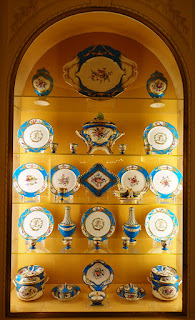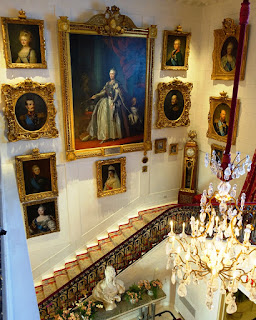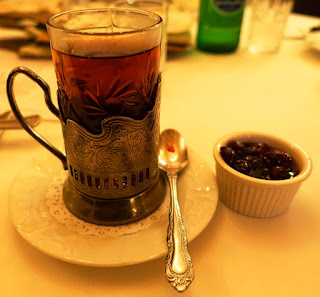The events of last Friday in Paris have dominated the headlines for the past week, and like many users on Facebook, I changed my profile photo to show the French tricolor. I noticed that this action on our parts triggered a certain reaction from some Facebook users, who posted links to articles that criticized the showing of solidarity with the people of France while simultaneously ignoring the equally horrific bombings that took place in Beirut the day before what occurred in Paris (as well as other atrocities that have taken place in Nigeria, Pakistan and other locales outside of the developed world). While valid points about selective outrage were made, I couldn't help but notice from looking at their previous feeds from before Friday the 13th that none of these holier-than-thou types had expressed any outrage over the Beirut bombings at the time they happened. They waited instead until well after the expressions of sympathy and solidarity started showing up across Facebook following the terrible events in Paris to get up on their virtual soapboxes. When tragedy strikes, some people can't resist the opportunity to show their moral superiority.
Unfortunately, an even nastier trend also emerged on Facebook: the cries of those opposed to President Obama's plan to allow 10,000 Syrian refugees into this country. Most of these people have put up, or linked to, posts proclaiming that we should take care of our hungry veterans, or the homeless on the streets, before opening up our borders to more people in need. The problems with that line of reasoning are legion. To begin with, like the smug "What about Beirut?" posters described above, very few of these folks suddenly concerned about those who have fallen through the social safety net have in the past publicly proclaimed on the pages of Facebook their concern with America's homeless population. The United States has the resources to take care of all those in need in our country, as well as continue to live up to the ideals spelled out on the Statue of Liberty (a gift from France, it shouldn't be forgotten); what it lacks is the will to do so. The American suburbs are populated by many of who are afraid of the outside world, and of the people who inhabit it. It's the same old sad and ironic paradox being played out yet again, that of a so-called nation of immigrants that suffers from xenophobia. And never mind that virtually all of our newfound fans of the homeless are themselves descended from immigrants. For every proverbial two steps forward this country takes, it continues to fall back one step each time. On the other hand, I've seen a lot of positive posts on my Facebook thread, so perhaps hope will eventually triumph over dismay.
Meanwhile, life goes on here in northern Virginia, as I continue to do daily battle with the complex rules of Russian grammar (which must have been hammered out by Russian grammarians over all-night vodka drinking sessions). Today my class had its first field trip, an excursion to the Hillwood Museum and Gardens in the Rock Creek Park area of Washington, D.C. The museum is housed in a 1923 neo-Georgian manor that was owned by Marjorie Merriwether Post, heir to the cereal-company fortune:
One of the wealthiest women in the U.S., Post purchased the estate in 1955. She began collecting French decorative arts in 1919, and her tapestries, furnishings and other objects are on display in the French Drawing Room. This room, with its painted and gilt wood paneling and mantel from Parisian homes dating to the time of King Louis XVI (1774-92), was the first stop on our guided tour with our Russian-speaking guide:
While Post started out as a Francophile, her passions shifted in 1937-8, when she lived in Moscow with her third husband, Joseph Davies, who was the U.S. ambassador to the U.S.S.R. at that time. She began collecting Russian imperial art; her timing was impeccable, as Stalin's government was willing to part with such treasures in order to get hard currency to fund industrialization programs. Post took advantage of the fire sale to amass an amazing collection, which is now on display at Hillwood. The Russian Porcelain Room, for example, has cases containing an array of imperial glass and porcelain, including four dessert services commissioned by Catherine the Great in the late 18th century, and distinguished by the insignia of the Russian elite:
The Pavilion was used by Post for after-dinner entertaining, which included the showing of movies to her guests. The room is highlighted by two paintings: The Countess Samoilova and Her Foster Daughter, by Karl Briullov; and (pictured below) A Boyar Wedding Feast. The latter painting, by Konstantin Makovsky in 1883, depicts a wedding feast between two noble class families in 16th- or 17th-century Russia:
Next we visited the Icon Room, containing objects and liturgical pieces associated with the Russian Orthodox Church, and including creations by Carl Fabergé, celebrated jeweler to the tsars and tsarinas:
The Library. The painting on the wall in the far left of the photo is a 1934 portrait of Post in a white silk dress with a red velvet sash. On the right is a portrait of her mother, Ella Merriweather. A portrait of her father, C.W. Post, hangs on the opposite side of the room, over the fireplace:
The Dining Room brought us back to the French theme, though the hunting scene paintings are Dutch and the table Italian:
One of the highlights of the museum is the Case of Bleu Celeste. This case is filled with pieces dating from the mid-18th century, manufactured by the famed Sèvres porcelain factory:
Heading up to the second floor, we passed through the Entry Hall. The grand staircase is dominated by a giant portrait of Catherine the Great, among other tsars and tsarinas:
The second floor contains Post's Bedroom Suite. The two girls in the painting over the fireplace are of two of her daughters, Adelaide and Eleanor:
Upstairs is also where the two finest pieces in Post's collection are displayed: two imperial Easter eggs by Fabergé. Both were gifts from Russia's last tsar, Nicholas II, to his mother, Maria Feodorovna. The first egg, the midnight blue Twelve Monograms Easter Egg (1896), is studded with diamond monograms:
The Catherine the Great Egg was presented by Nicholas to his mother in 1914. It originally held inside a miniature figure of the empress, seated in a wind-up sedan chair carried by two servants, and was revealed by opening the top of the egg. It was unfortunately lost, but the egg is still a magnificent example of Fabergé's art:
Speaking of Catherine the Great, this chalice pictured below was part of a set of liturgical gold vessels presented by the tsarina in 1791 to the Holy Trinity Cathedral of the Alexander Nevsky Monastery in St. Petersburg:
The chalice is on display in another room containing religious items connected to the Russian Orthodox Church:
In addition to its treasure trove of Russian art, Hillwood is also noted for its gardens. Some of the objects displayed outside were a little, um, odd:
Posing with two of my three classmates and our teacher, Olga:
The Mansion as seen from the Lunar Lawn:
Post was prepared during the Cold War:
We may live in a republic, but the American ruling classes have always looked up to their European aristocratic counterparts, aspiring to live in equally appointed mansions surrounded by extensive art collections. The sheer ornateness of the treasures of the Russian imperial families as displayed at Hillwood also provides a telling clue as to why Bolshevism eventually took hold in the Russian Empire, leading to the unfortunate end of the Romanovs.
After our tour of the Hillwood Museum and Gardens, our group reunited at Mari Vanna, a somewhat pricey Russian restaurant on Connecticut Avenue. The beef-and-pork pelmeni пельме́ни (traditional handmade Russian dumplings) were delicious, however:
Russian isn't an easy language to learn, but I am enjoying studying it more than I did Mandarin Chinese several years ago, though I still wish I could be learning Lithuanian (as was originally intended). And as I'm going to Vilnius, it really isn't necessary for me to learn much about Russian culture. Still, I enjoyed Marjorie Merriweather Post's extensive collection of Russian art, and am appreciative that she opened her estate to the public. Even if, as the Wikipedia entry on her states, she was "alleged to have purchased art expropriated from Soviet citizens well after the Russian Revolution, including victims of Stalin's Terror at discount prices from Soviet authorities." If she hadn't, I might've had to spend another full day in the classroom.

























hi Jim. it might be time for you to make a graceful exit from FB. I did that several years ago and I have much more time on my hands, and nothing to regret whatsoever. I unfriended everyone, deleted every photo and never logged in again. take care.
ReplyDeleteThat's not a bad suggestion, but I do have a lot of friends from both my college and Tokyo days that I keep in touch with via FB. At this point, it's much easier to unfriend certain individuals.
Delete